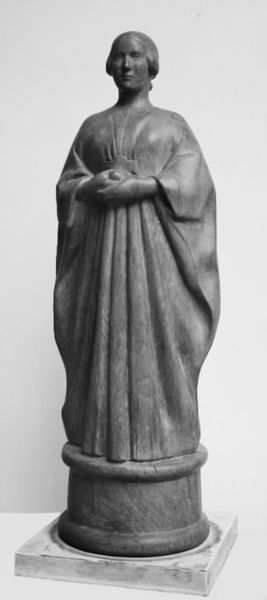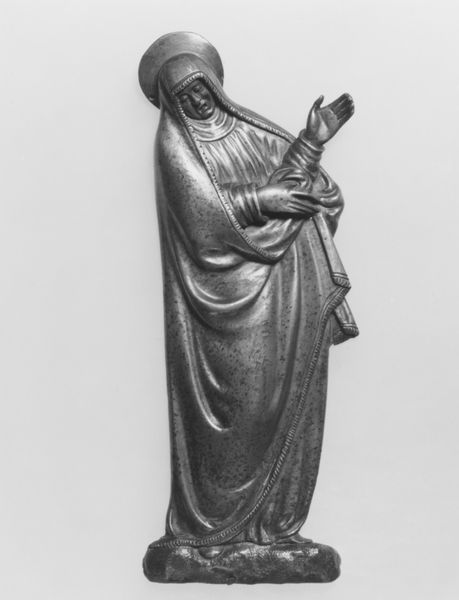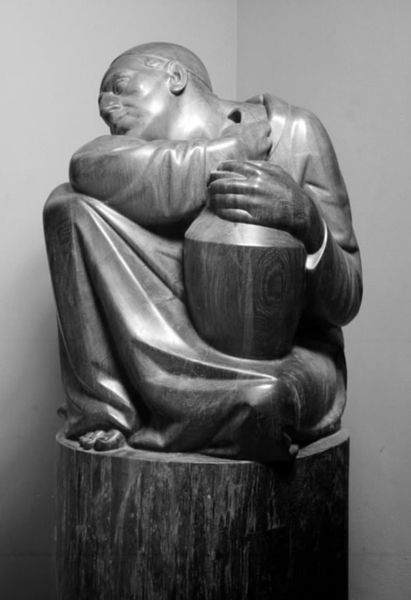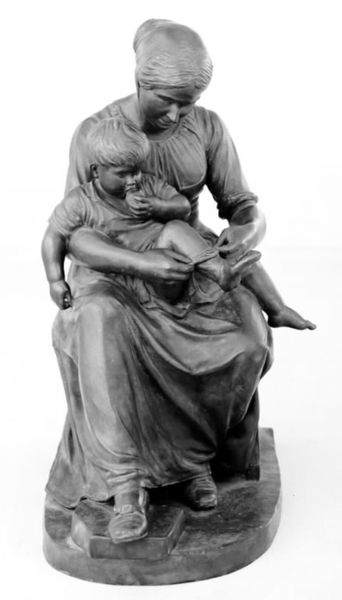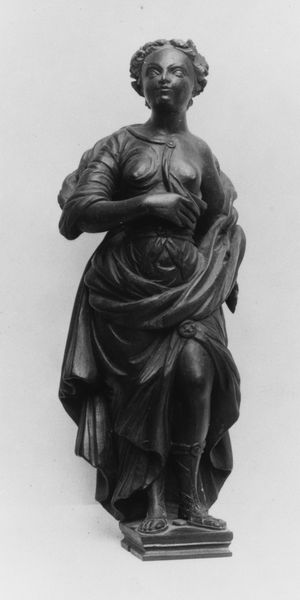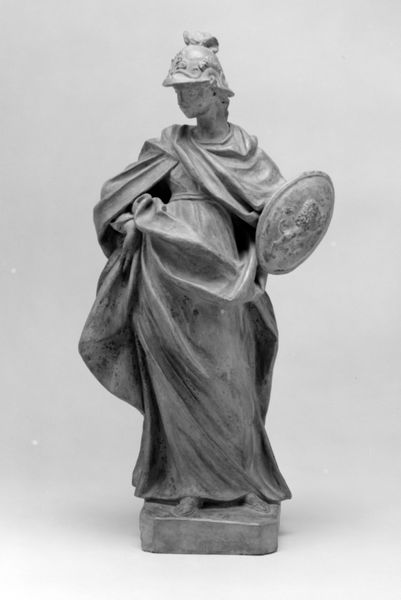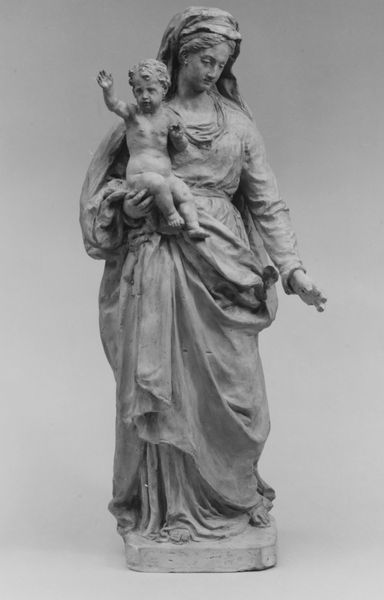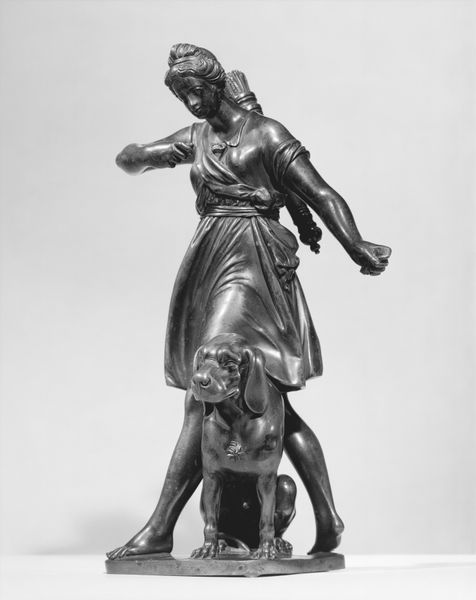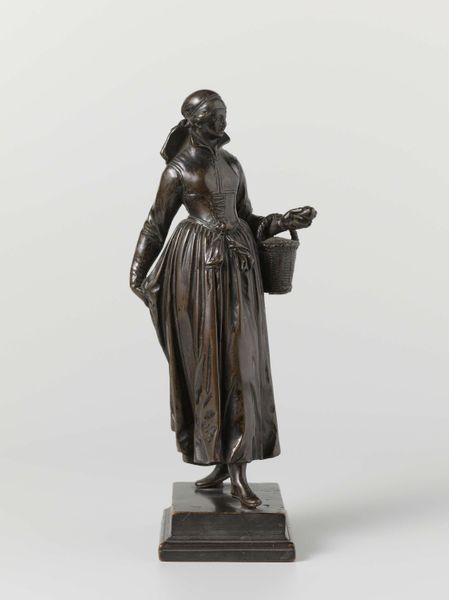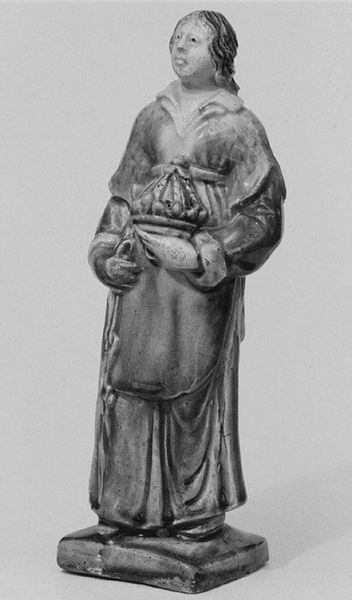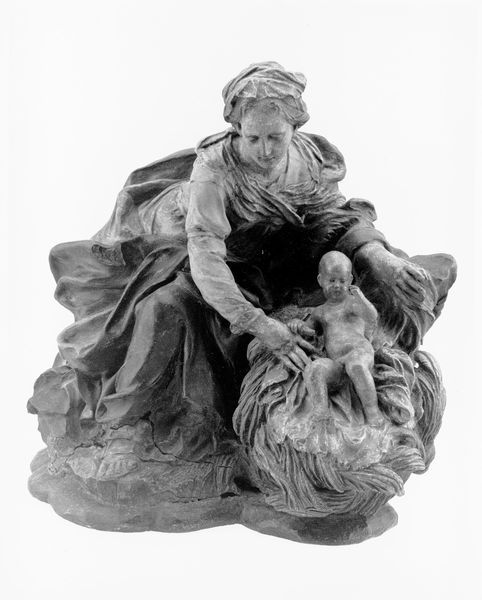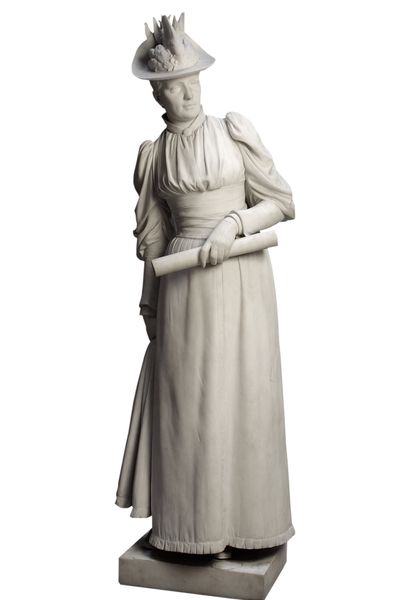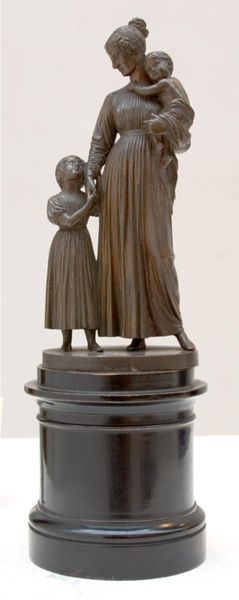
Pigen ved brønden. Stående pige i lang kjole fylder en krukke med vand 1855
0:00
0:00
bronze, sculpture
#
portrait
#
sculpture
#
bronze
#
sculpture
#
genre-painting
#
academic-art
#
realism
#
statue
Dimensions: 27.3 cm (height) x 10.5 cm (width) x 10.3 cm (depth) (Netto)
Editor: This is "The Girl at the Well" by Harald Conradsen, made in 1855 out of bronze. I'm struck by how static it feels, yet the implied movement of filling the jar creates a tension. What's your perspective on this piece? Curator: This bronze sculpture presents a fascinating lens through which to examine 19th-century Danish society. Consider the material itself, bronze. Its usage suggests a certain level of patronage or aspiration to elevate the subject. Bronze, though a long-lasting material meant to be durable, also connects this work to older art historical and classist traditions. What does it say about representing a "girl" through such a deliberate and laborious process? Editor: So, the choice of bronze isn't just about aesthetics, but about placing the figure within a social context and also art history. How does her dress factor in? Curator: Her clothing, while simple, speaks volumes. It represents the working class, the everyday laborer. However, she isn't necessarily doing hard labor *right now*; it's a posed, static image – closer to the idealized genre-painting tradition rather than representing manual work. I'd be curious about the commissioning of the artwork; what purpose was it made for? Editor: It's interesting to think about the tension between portraying this girl in the garb of everyday life, while simultaneously using this quite high art medium and technique of bronze sculpture. I wonder if Conradsen sought to democratize sculpture. Curator: Democratize, or perhaps simply bring a certain moralistic virtue to this labor? The sculpture asks us to think about the value of labor in an evolving economic and social structure, rather than an attempt to show her agency as such. Consider how the materials elevate the scene beyond the simple act of fetching water. Editor: I see what you mean! By focusing on the material and production, the statue reveals much more about societal values of work and class than first meets the eye. Thanks for opening that up for me. Curator: Indeed. Considering art as a product of material conditions allows us a much richer reading of these supposedly ‘still’ or unmoving objects!
Comments
No comments
Be the first to comment and join the conversation on the ultimate creative platform.
